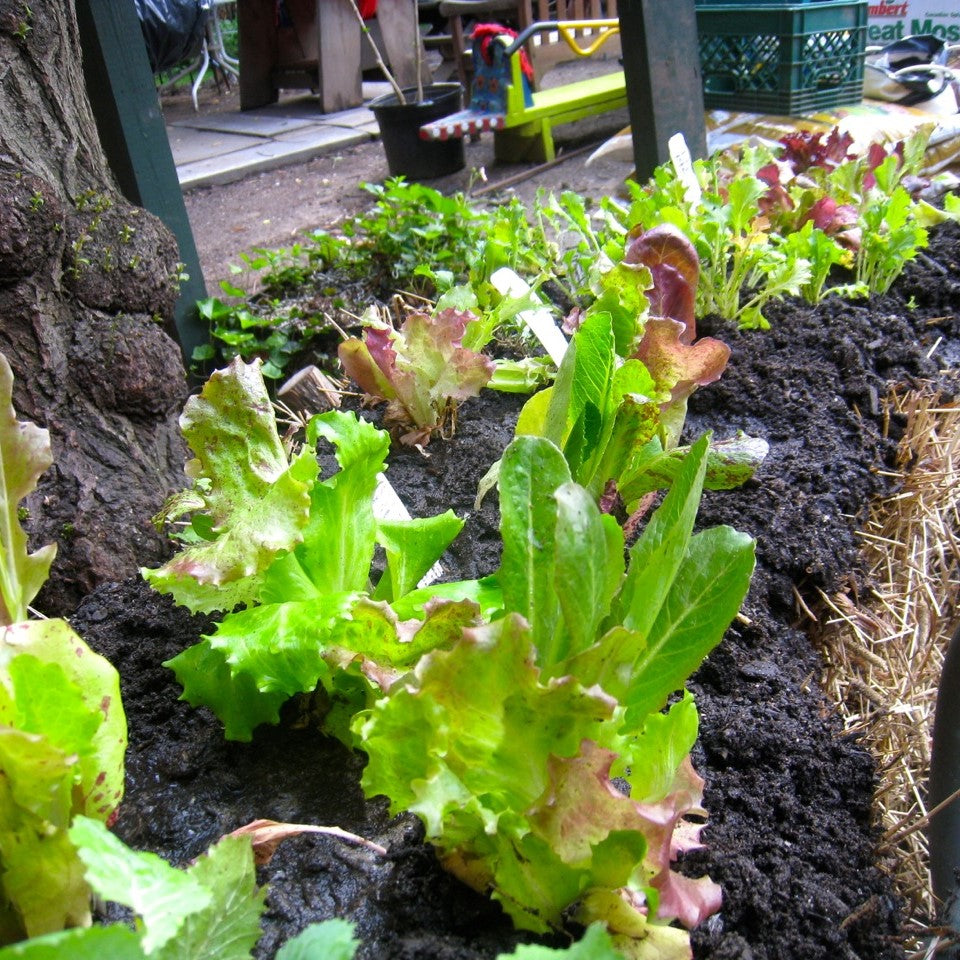Should You Grow in a Straw Bale Garden?
•Posted on March 07 2019

Straw bale gardening is a technique that uses bunches of straw as hosts for growing plants. This method of cultivation is built like a raised bed garden - above ground with the exception that you use straw bales in place of soil.
Find out how you can create your own straw bale garden, the pros and cons of it and what you can grow with this gardening method.
Which Type of Straw is Needed?
To make a beautiful, healthy garden you need good, firm straw bales. Wheat, rice or barley are good choices since they drain very well and will not develop any mildew.
However, straw that has fewer seeds is the best option.
Other choices include oats, rye or corn stalks. Hay bales may have more seeds but offer more nutrition to the plants.
What You Need to Start Your Straw Bale Garden:

1. Construct Garden Area
The first thing is to place a sheet of plastic on the bottom of the garden area to retain moisture. Arrange the straw side by side in rows.
Tightly pack in the straw bales until the entire area of your garden is filled in. Soak the whole garden with water.
Build a plastic barrier around to hold the bales in place and place another sheet of plastic on top.
2. Preparing Bale
The straw bale will require 3 to 4 weeks of composting before it is ready to grow plants. During this time you need to water the bales twice a day.
During this time, the bale will begin to decompose. If the bales start sprouting, simply trim them with a pair of scissors or a knife.
3. Adding Fertilizer
Once composting has occurred you have to top the bales with manure and add fertilizer. Spread the organic fertilizer over the surface of the bales and then water.
After you add fertilizer, the rate of bacterial action in the decomposing straw will increase, raising the bed's internal heat and creating a micro-climate, which will be beneficial to the plants.
Cover the top with plastic and let it sit for an additional week. After a week, the bales should be fresh enough to start planting your seeds.
Benefits of Straw Bale Gardening

Some of the benefits of this growing method include:
- No soil is needed.
- Less weeding is required since straws are resistant to weeds, pests, and fungal infections.
- It's ideal for small spaces and if your garden is too rocky.
- It is best for soil with poor drainage. The straw is very efficient when it comes to drainage.
- Applying this technique to your garden can also be very helpful if you have knee problems or wish to avoid the mess involved with soil gardening.
Disadvantages of Straw Bale Gardening
On the other hand, some disadvantages of straw bale gardening are:
- Straw dries out more quickly, so you need to water it frequently.
- Straw does not have much nitrogen content; therefore you need to add nitrogen and other nutrients into the bales for the plants to thrive.
What Plants Grow Well With This Urban Garden Technique?

It is possible to grow any vegetable you choose in your straw bale garden from large-leaf plants to tomatoes, melons, and squash however veggies like corn and okra are not recommended.
These type of vegetables tend to make the bales a bit too top heavy and they may be easily blown over by the wind.
Annual flowers can also be grown in the straw bales, but perennials are not recommended.
Where Can You Buy Straw Bales?
Many garden stores, plant nurseries, home improvement stores, and animal feed suppliers will sell straw bales.
Alternatively, you can source the straw bales directly from an organic farm.
Farms are the cheapest source of straw bales, plus you avoid the risk of growing your plants in straw bales that are packed with the toxic pesticides, herbicides, and fertilizers used by so many non-organic farms.
This method of urban gardening is environmentally friendly and time-saving. You should try it out as it is a chance to own a healthy garden with balanced moisture, and slow-release of nutrients.
Just ensure to regularly fertilize your straw bale garden with multi-purpose organic fertilizers that are rich in nitrogen, you can shop a variety of our fertilizers below that are economical and healthier for both you and the garden.
Related Posts:
Comments
2 Comments
-

Posted by Greenway Biotech | June 15, 2020
-

Posted by Allison K | June 15, 2020
Leave a CommentAllison: We’re sorry to hear you had trouble with your straw bale garden! Results vary depending on what you use as your growing medium and things of that nature. We appreciate your insight.
My straw bale garden – use straw NOT hay bales! – was infested with slugs. Soooo disappointing and frustrating. Be prepared!